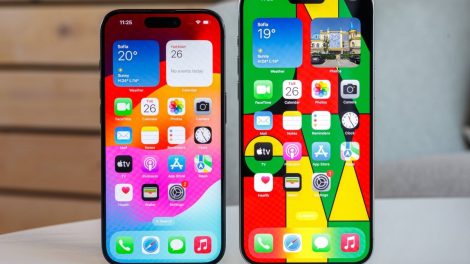The smartphone industry is poised for a significant transformation in 2025, fueled by the increasing adoption of 5G technology and advancements in artificial intelligence (AI). These technological innovations are expected to drive demand and reshape consumer expectations, making smartphones more integral to daily life than ever before. Analysts forecast substantial growth in global smartphone shipments, with manufacturers focusing on integrating cutting-edge features to stay competitive in a highly dynamic market.
5G technology remains a key driver of this anticipated growth. By 2025, the global rollout of 5G networks will have reached maturity, offering faster speeds, lower latency, and greater reliability than previous generations of wireless connectivity. This improvement will enable users to enjoy seamless streaming, gaming, and multitasking experiences. Additionally, 5G is expected to revolutionize industries like healthcare, education, and transportation, further solidifying its role as a critical component of modern smartphones.

The rise of AI-powered features in smartphones is another factor boosting demand. AI capabilities have already become a staple in devices, enhancing functionalities such as camera performance, battery optimization, and voice assistance. In 2025, AI integration is predicted to become even more sophisticated, allowing for real-time language translation, advanced health monitoring, and personalized user experiences. This evolution will cater to diverse consumer needs and elevate the smartphone’s role from a communication device to a central hub for daily activities.
Manufacturers are investing heavily in research and development to meet these demands. Companies are expected to unveil devices with enhanced hardware specifications, including high-resolution displays, advanced camera systems, and powerful processors. Foldable smartphones and other innovative form factors will likely gain traction, appealing to users seeking versatility and unique designs. Furthermore, eco-friendly initiatives are set to influence production processes, with brands emphasizing sustainability in materials and packaging.
The following table highlights some of the key trends anticipated in the smartphone industry by 2025:
| Trend | Details |
|---|---|
| 5G Expansion | Widespread availability of faster, more reliable networks |
| AI Integration | Advanced functionalities, including real-time translation and personalized user experiences |
| Foldable Designs | Increased adoption of foldable and flexible display technology |
| Camera Innovations | Improved sensors, computational photography, and enhanced low-light performance |
| Sustainability Efforts | Use of recycled materials, energy-efficient components, and eco-friendly packaging |
These advancements will significantly impact consumer behavior, with users placing greater emphasis on features that align with their lifestyles. For instance, the growing interest in mobile gaming will drive demand for devices with high-refresh-rate displays and robust processors. Similarly, the popularity of content creation on social media will make camera quality and video recording capabilities critical factors in purchasing decisions.
Pricing strategies will also play a crucial role in shaping the market landscape. While premium smartphones will continue to dominate headlines with their groundbreaking features, mid-range and budget segments are expected to experience the most growth. Affordable 5G-enabled devices will become more accessible, ensuring a broader demographic can benefit from next-generation connectivity. Brands that strike a balance between innovation and affordability are likely to capture significant market share.
Regional dynamics will influence the industry’s trajectory, with emerging markets driving much of the demand. Countries in Asia, Africa, and Latin America are projected to experience rapid smartphone adoption, fueled by improving infrastructure and increasing disposable income. In these regions, the availability of budget-friendly options with advanced features will be crucial in bridging the digital divide and fostering economic growth.
Software innovation will further enhance the appeal of smartphones in 2025. Operating systems are expected to offer greater integration with smart home devices, wearables, and vehicles, creating a cohesive ecosystem for users. Privacy and security features will also receive significant upgrades, addressing concerns about data protection and cyber threats. These improvements will reinforce consumer trust and encourage the adoption of new technologies.
Retail and distribution channels will adapt to the evolving market. Online platforms will remain dominant, offering convenience and competitive pricing. However, brick-and-mortar stores are anticipated to focus on providing immersive experiences, such as hands-on demonstrations and personalized consultations. This hybrid approach will cater to diverse shopping preferences and enhance customer satisfaction.
As the industry evolves, challenges such as supply chain disruptions and regulatory changes may arise. Semiconductor shortages, for example, could impact production timelines and pricing strategies. Nevertheless, companies that prioritize resilience and adaptability will be better positioned to navigate these hurdles and capitalize on emerging opportunities.
2025 promises to be a landmark year for the smartphone industry, driven by the widespread adoption of 5G and advancements in AI. These technologies will redefine the capabilities of smartphones, transforming them into indispensable tools for work, entertainment, and communication. With manufacturers pushing the boundaries of innovation and affordability, consumers can look forward to an exciting array of options that cater to their needs and preferences. The industry’s growth will not only benefit users but also contribute to global economic development, underscoring the significance of smartphones in shaping the future.










Add Comment